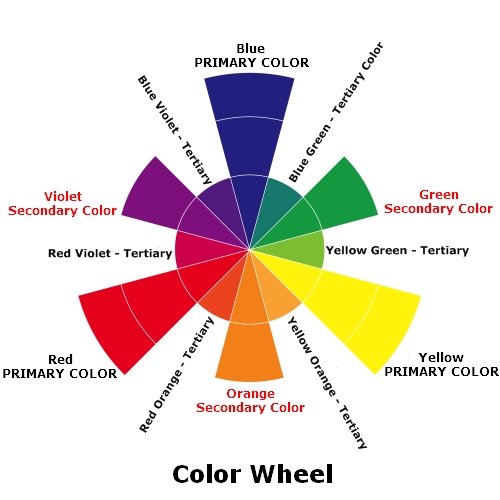What is Color?
Finally... Color EXPLAINED!
Color is light and most of this light comes from the sun. This visible light which is part of a wider spectrum of energy that surrounds us, interacts with our eyes which in turn translates the energy of light into signals - nervous impulses - that the brain then interprets as "seeing".
Visible light is split into seven wavelength groups vibrating at different speeds and different frequencies. To further explain - the long wavelengths are the reddish colors, the greenish colors are the mid-size wavelengths and the short wavelengths are the bluish colors, see color wheel diagram here.
These wavelenths of energy, to us, appear as color due to the potential and capabilities of objects to either absorb (objects that ABSORB all wavelengths and DO NOT reflect any of these wavelengths, will be seen as black) or reflect (objects that REFLECT all wavelengths in other words reflecting everything, will be seen as white) the energy.
It is between black and white that COLOR lies. These are the colors you see in a rainbow known by the mnemonic ROYGBIV or in England is most commonly refered to as "Richard Of York Gave Battle In Vain" which references the colors in order i.e. red, orange, yellow, green, blue, indigo, and violet.
Colors affect us in numerous ways and is active on all levels of our being - mental, emotional, physical and spiritual. A strong red color has been shown to raise the blood pressure, while a blue color has a calming effect.
Being able to use colors consciously and harmoniously can help you create spectacular results on all levels. Visualizing and meditation with color is very powerful if it is worked with regularly.
The chemistry of color involves pigments and combinations.
Primary, Secondary and Tertiary Colors

Primary ColorsPrimary colors are sets of colors that can be combined to make a useful range of colors. For human applications, three primary colors are usually used and they cannot be made up from any other colors: Blue, Red and Yellow | Secondary ColorsEach secondary color is made from the two primary colors closest to it on the color wheel and are formed by mixing equal parts of the primary colours as follows: Red + Blue = Violet, Blue + Yellow = Green and Yellow + Red = Orange | Tertiary ColorsThese are formed by mixing a primary colour with a secondary on a ratio of 2 to 1 and are: Blue-Green, Yellow-Green, Yellow Orange, Red-Orange,Red-Violet and Blue-Violet |
Complementary ColorsThese are those which, when mixed together in the same proportion produces grey and are opposite one another e.g. as follows: Red - Green, Violet - Yellow, Blue - Orange. etc. | Warm ColorsWarm colors are vivid and energetic, and tend to advance in space. They tend to make you think of sunlight and warmth and are in the color range of Red, Orange and Yellow. | Cool ColorsCool colors give an impression of calm, and create a soothing impression. They might make you think of cool and peaceful things, like winter skies and are in the color range Blue, Green and Violet. |
No comments:
Post a Comment